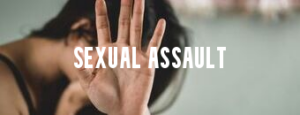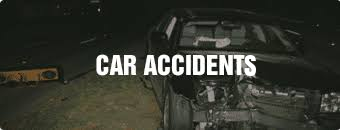- Our Firm
- Personal Injury
-
-
-
Personal Injury Lawyers
-
-
-
-
-
-
Injured in an accident? At Diamond & Diamond, our team of lawyers rely on their reputation in the field and extensive experience in personal injury to provide clients with a dedicated support system over the duration of their case.
-
-
-
-
-
HAVE YOU RECENTLY BEEN INJURED IN AN ACCIDENT?
-
-
-
- Corporate
- Class Action

Burden of Proof in a Personal Injury Case
#AskIsaacZisckind
It might seem a bit confusing to have your Ontario personal injury lawyer discussing the evidence needed to prove negligence and the extent of your injuries in court. You might think it’s clear what happened, but you have the burden of proving it to the impartial judge who will award you compensation. As the plaintiff, the legal term for the person filing a civil lawsuit, you have the burden of proof in a personal injury case to produce evidence showing your injuries were caused by the negligence of another party.
Burden of proof in a civil case
As the plaintiff in a civil case, the burden is on you to prove your entitlement to compensation by the balance of probabilities. If the judge hearing the case believes the evidence you produce in court makes it more likely than not that the defendant, the party being sued, was negligent and his or her negligence caused you to suffer injuries.
This is a much lower standard of proof than is required of the prosecution in a criminal case. In order to convict someone of a crime, the evidence must prove the person’s guilt beyond a reasonable doubt.
What the evidence in a personal injury case must prove
Compensation in a personal injury case is based upon the injuries you suffer being caused by the defendant engaging in careless or reckless conduct. Proving negligence requires evidence showing each of the following elements:
- The existence of a duty of care on the part of the defendant
- A breach of the duty
- Foreseeability
- Causation
A defendant must owe a duty of care to the plaintiff or to the public in general. For example, the driver of a car in Canada owes a duty of care to other motorists and pedestrians. If the evidence proves the defendant breached this duty, then you might recover compensation for your injuries provided the evidence also shows the defendant could have foreseen that his or her conduct would cause injuries or harm to others.
If a driver is texting on a cellphone while approaching an intersection and crashes into your car, there has been a breach of the duty to not cause injury to others. The motorist should have foreseen that texting while driving would be a distraction that could cause an accident.
The reasonable person standard and proving negligence
Whether the evidence proves a breach of the duty of care owed by the defendant is determined by the application of a reasonable person standard by the judge hearing the case. The reasonable person standard is based on a determination of what an average, reasonably prudent adult would do under the same circumstances in which the defendant was placed at the time of the accident.
Proving causation
Assuming the evidence presented by your personal injury lawyer succeeds in establishing each of the other elements of negligence, a judge will not award compensation unless causation has also been proven. Causation simply means proving the injuries you suffered were the result of the conduct of the defendant.
Testimony from your treating physician detailing the injuries you suffered and linking them to the accident is the type of evidence commonly used to prove causation. It establishes the connection between the negligent conduct and the harm it caused.
A personal injury lawyer can help
If you have been injured in an accident, contact the personal injury lawyers at Diamond and Diamond. Their skills and knowledge of the law have succeeded in recovering compensation for victims of the negligent conduct of others. Find out what we can do to get you the compensation you need and deserve by contacting our 24/7 injury hotline at 1-800-567-HURT or by visiting our website to speak to someone now about your claim. Consultations are free, and we have offices located throughout Ontario.
Need a Lawyer?
We are here 24/7 to address your case. You can speak with a lawyer to request a consultation.
1-800-567-HURTGet started with a free consultation
OUR TEAM
- Ishmeet Sandhu
- Nolan Bachmann
- Annamarie Demaj
- Jeffrey Hum
- Tofunmi Adeyeye
- Alessia De Gasperis
- Amandeep Chawla
- Jeremy Tsoi
- Kimiya Razin
- Shir Zisckind
- Gray Sinden
- Shelly Bard
- Christian Brown
- Daly Canie
- Tanveer Sohal
- Prianka Virdi
- Noah Brownstone
- Justin Kaminker
- Harinder S. Bhatti
- Craig Yargeau
- Kiran Birk
- Amit Singh
- Andrei Teju
- Maria Zahid
- Matthew Douglas
- Jacob Elyk
- Harry Gill
- Kristina Olivo
- Egi Bano
- Cam Woolley
- Charles Thompson
- Alexandra McCallum
- John Sime
- Allan Cocunato
- Patrick Poupore
- Erika Henderson
- Marina Korshunova
- Brandon Handelman
- Regeena Alapat
- Ryna Kim
- Natalia Poliakova
- Isaac Zisckind
- Manpreet Bhogal
- Mathura Santhirasegaram
- Nikolai Singh
- Sandra Zisckind
- Jeremy Diamond
- Michael Blois
- Darryl Singer
- Nadia Condotta
- Tinashe Madzingo
- Megan Armstrong
- Veronica D’Angelo
- Corey J. Sax
- Scott Tottle
- Steven Wilder
- TJ Gogna
- Jillian Carrington
- Joshua Himel
- Simon Diamond
- Cory Rubin
- Simon Mariani
- Brandon Greenwood
- Basil Bansal
- Nastassia Ivanova
- Tania Fleming
- George Laloshi
- Patrycja Majchrowicz
- Diana Iakossavas
- Dior Africa
- Alex Ragozzino
- Liana Saccucci
- Richard J. Chang
Head Offices
Main Offices
Barrie
Main Office
168 Bayfield Street
Calgary
Main Office
1331 Macleod Trail SE, Suite 645
Edmonton
Head Office
4246 97 Street NW, Unit 103
Halifax
Consultation Office
1701 Hollis St
London
Main Office
256 Pall Mall St, Suite 102
Oshawa
Consultation Office
50 Richmond Street E, Unit # 108 B
Ottawa
Main Office
955 Green Valley Crescent, Unit 315
Sudbury
Main Office
31 Larch Street, Unit 300
Timmins
Main Office
120 Cedar Street South, Unit 002A
Toronto
Head Office
255 Consumers Road, 5th Floor
Vancouver
Head Office
1727 West Broadway, Suite 400
Windsor
Main Office
13158 Tecumseh Rd. E. Unit 3B
Additional Areas Served
Ontario
- Ajax
- Alberta
- Aurora
- Barrie
- Belleville
- Bowmanville
- Brampton
- Brantford
- Brockville
- Bracebridge
- Bradford
- Burlington
- Burnaby
- Calgary
- Chatham
- Cobourg
- Collingwood
- Cornwall
- Durham
- Edmonton
- Elliot Lake
- Etobicoke
- Georgetown
- Guelph
- Hamilton
- Huntsville
- Kanata
- Kelowna
- Kingston
- Kitchener
- Leamington
- London
- Markham
- Milton
- Mississauga
- Muskoka
- Niagara Falls
- Newcastle
- Newmarket
- North Bay
- North York
- Oakville
- Orangeville
- Orillia
- Oshawa
- Ottawa
- Owen Sound
- Parry Sound
- Perth
- Peterborough
- Pickering
- Prince Edward County
- Richmond
- Richmond Hill
- Sault Ste Marie
- Sarnia
- Scarborough
- St. Catharines
- St. Thomas
- Stouffville
- Sudbury
- Surrey
- Thunder Bay
- Timmins
- Toronto
- Uxbridge
- Vancouver
- Wallaceburg
- Waterloo
- Welland
- Whitby
- Windsor
- Woodstock













